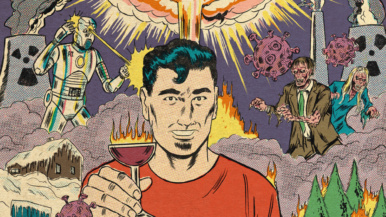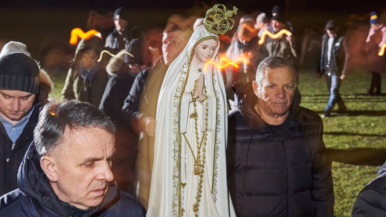How do you build a roller coaster at the CNE?
The CNE opens its gates today, inaugurating an end-of-summer tradition. Amid all the colours, lights and deep-fried stunt foodstuffs, though, it’s easy to lose sight of the Ex’s central miracle: most of it is erected in the weeks before the festival, and most of it will be gone shortly after September 1.
The backbone of the CNE is the midway—the agglomeration of stuffed-animal games and vertigo-inducing rides that give the fair its carnival vibe. One of the most distinctive of those rides is the Crazy Mouse, the towering kiddie coaster that has entertained cotton-candy-stuffed youngsters and their families since 2006, when the Ex’s midway contractor, North American Midway Entertainment, purchased it from Zamperla, the ride’s Italian manufacturer. The massive, three-tier coaster arrives in pieces, on the backs of six tractor-trailers, and is assembled quickly (but safely, with TSSA approval) in the days before the start of the festival by a crew of up to 18 workers. Here’s how it’s done.

It takes six tractor-trailers to haul the Crazy Mouse from town to town. The ride’s home base is in Miami, but it travels across Canada and the eastern U.S. during the festival season.

A truck-mounted crane unloads the trailers and lifts the coaster’s many parts into position.

The track and catwalk come in pieces. Workers fit them together on the ground.

Hard hats (and motivational t-shirts) are necessary equipment. The crew is, for the most part, Miami-based. They travel with the carnival.

After all the trailers have arrived and workers have started unloading and assembling the track, the crew begins setting up the blocking that will form the ride’s base. The blocking consists of piles of wood of varying height, overlaid with steel. The goal of this step of the assembly process is to level out the ride’s base as much as possible.

The first part of the ride to be assembled is the up-ramp, which contains the motor that gives the coaster’s cars their initial push.

A view of the up-ramp.

The crew begins assembling the ride’s jack stands. These are the things that physically hold the track off the ground. The jack stands attach to the fence, which acts as an additional stabilizer. The whole thing is held together with pins and bolts.

As the assembly progresses, the workers split into two crews. One group works mainly at ground level, assembling track, while another crew straps on safety harnesses and lays the track on the jack stands. Once the track is mostly in place, it’s time to start adding all the compressors, tanks, hosing and wires that control the braking and safety systems.

The last significant step in the assembly is installing the main station, where passengers will enter and exit the ride. Unlike the rest of the Crazy Mouse, the station comes mostly preassembled. It arrives intact on the back of a truck and is simply lifted into place.

And here’s the Crazy Mouse, in its mostly complete state. The full assembly process can take as little as two days, though inclement weather and other factors can cause delays (this year, the assembly ended up taking almost a week). After the ride finishes its run at the CNE, it will be torn down over the course of a day or two (weather permitting) and shipped out for its next engagement: the Eastern States Exposition in Springfield, Massachusetts.





